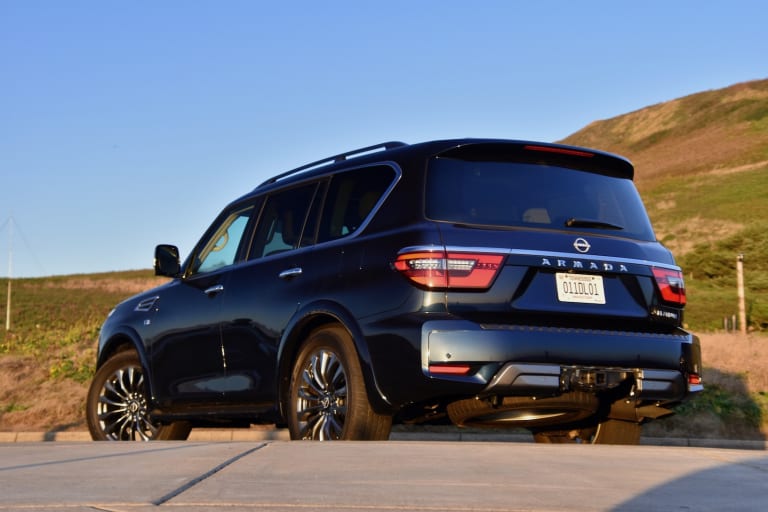Though its refreshed skin and slightly oomph-ier (to use the technical term) V8 engine don't give it away, the 2021 Nissan Armada is now a more than decade old. Under its stylistic makeover are the underpinnings of a vehicle that first hit the scene in 2010—not a problem in itself, as Nissan proved with the Frontier. Get a vehicle's base formula right, and it doesn't need to change much to keep with the times.
But unlike the Frontier, the Armada's latest overhaul hasn't gone down perfectly, as I discovered over one week and 1,000 miles in a top-of-the-line Armada Platinum. Despite a successful makeover and mechanicals that have aged like a barrel of rum, glitches with the Armada's new standard tech dampen its appeal, especially to shoppers of higher trims, who I can't see tolerating these kinds of frustrations with a $70,000 SUV.
2021 Nissan Armada Platinum 4WD: By the Numbers
- Base price (as tested): $50,395 ($71,250)
- Powertrain: 5.6-liter naturally aspirated V8 | 7-speed automatic transmission | selectable rear-wheel or four-wheel drive with high and low ranges
- Horsepower: 400 @ 5,800 rpm
- Torque: 413 lb-ft @ 4,000 rpm
- Max towing capacity: 8,500 pounds
- Max payload capacity: 1,466 pounds
- Cargo volume: 95.4 cubic feet with seats folded | 49.9 with second row up | 16.5 with third row up
- Fuel economy: 13 mpg city | 18 highway | 15 combined (17.4 recorded in testing)
- Quick take: Handsome updates and generous standard equipment don't quite make up for unreliable tech.
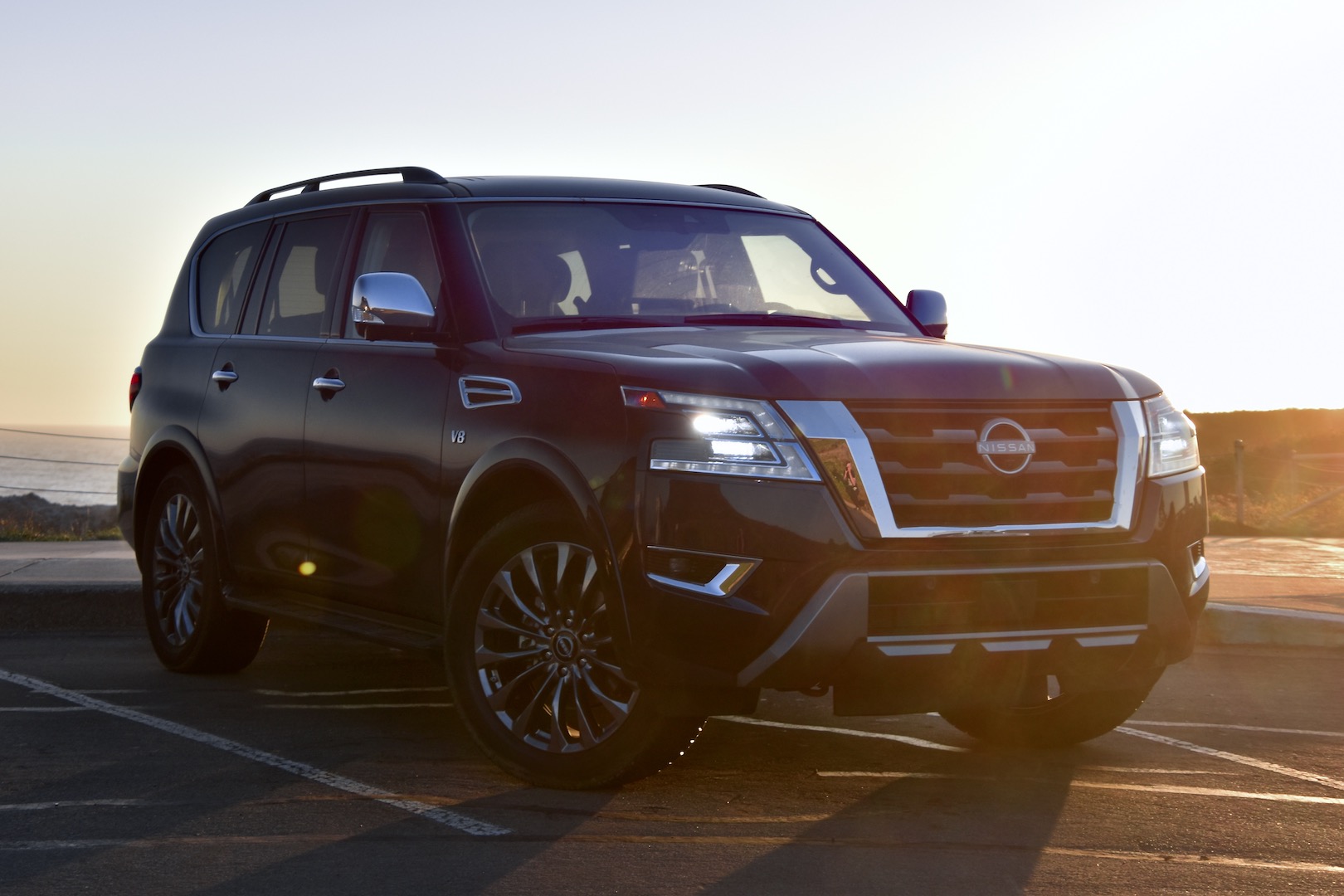
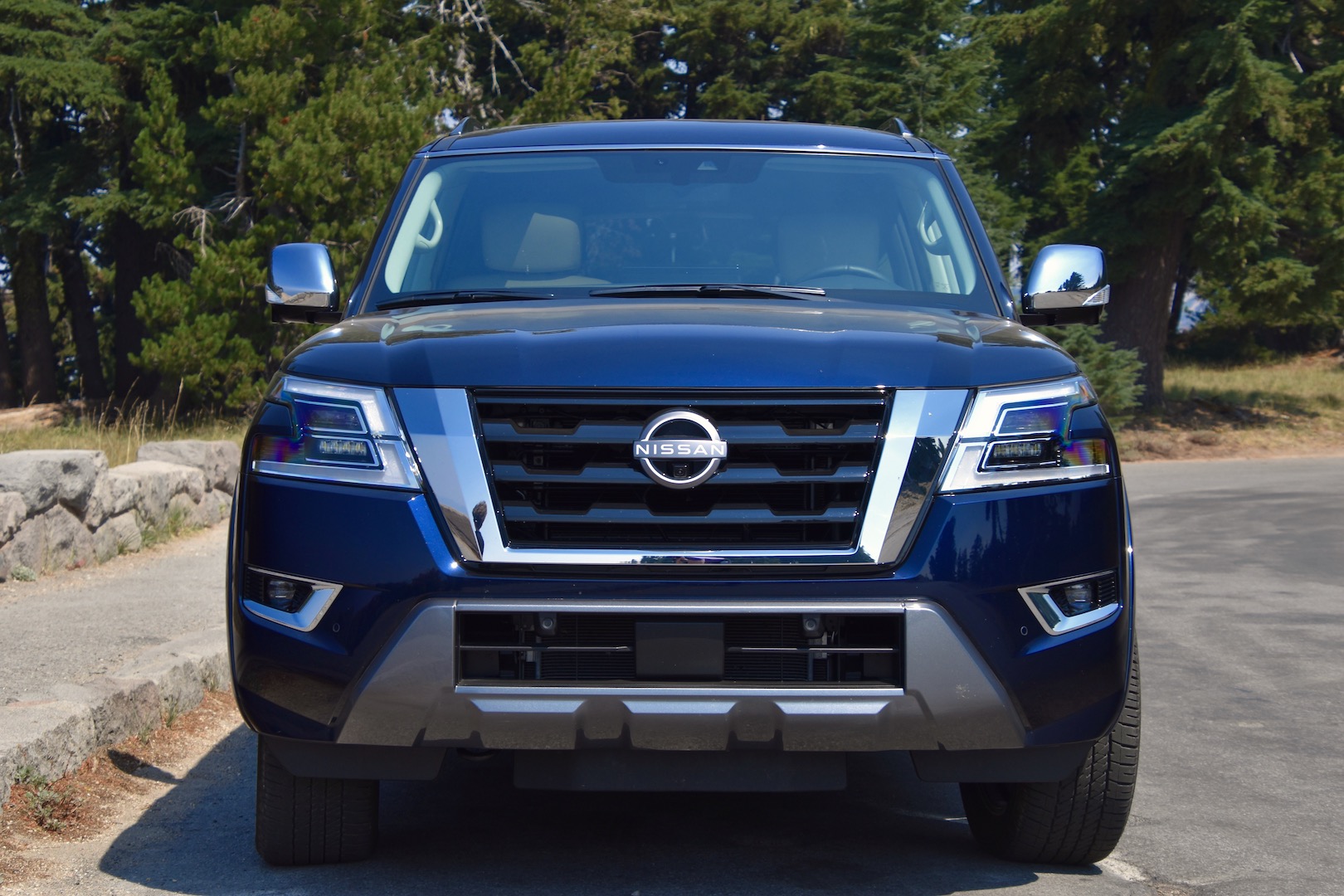
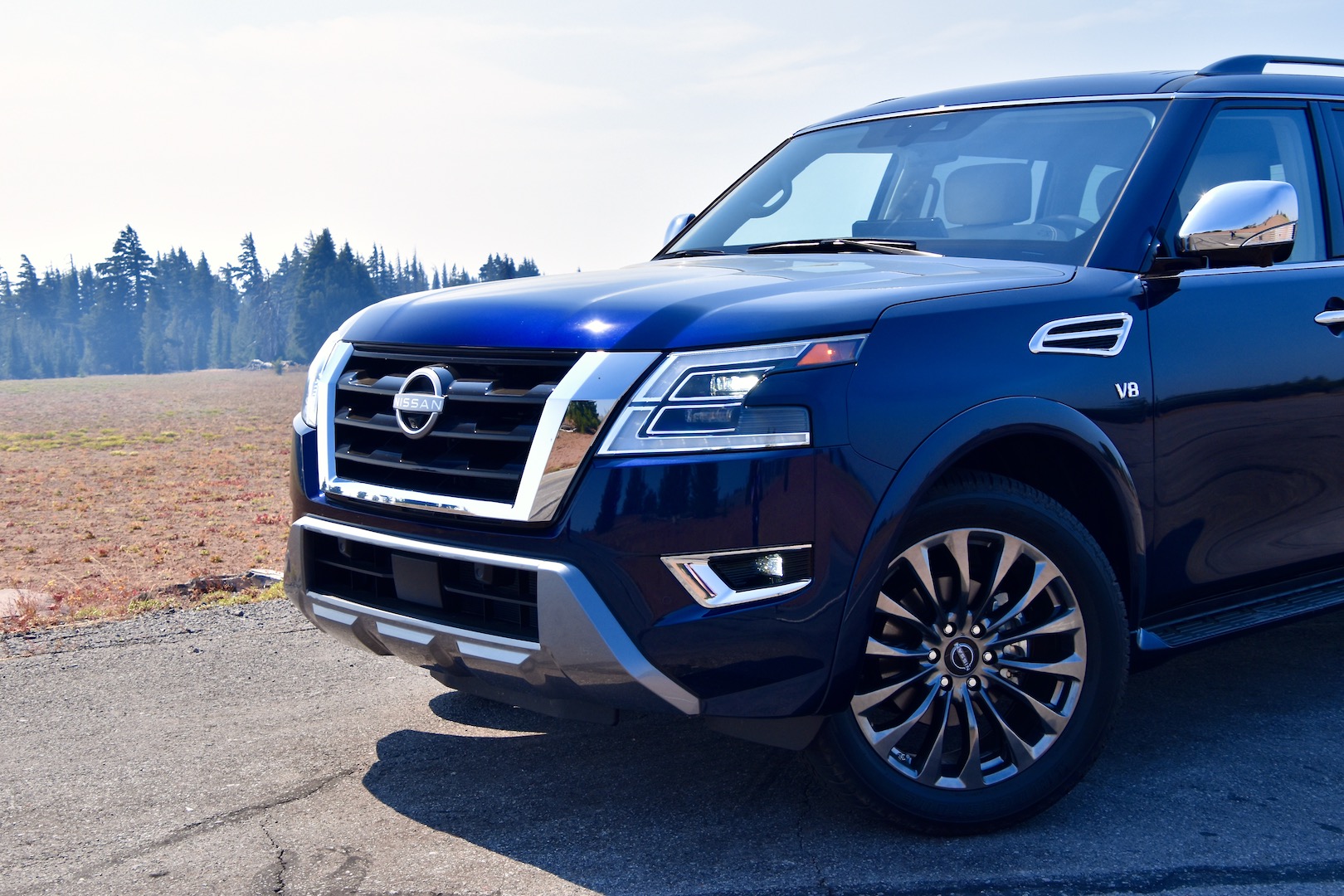
A Gallant Galleon
The 2021 Armada's most obvious change is its new exterior, with reworked front and rear ends. Of these, the former is the fresher, with the same notched headlights seen on the new Pathfinder, and no more grille resembling the nasty Titan from the aughts.
Out back, the linked, inverted trapezoidal LED taillights with an embedded reverse light slightly echo the 2014-onward Dodge Durango to me, while the side profile is older still; it's recognizably the same as a its cousin the 2011 Infiniti QX, with busy 22-inch alloy wheels that wouldn't look completely out of place thereon. The result, though, is far greater than the sum of its parts, and the renewed Armada looks imposing without being brash like the pre-facelift model.
Even more to my taste is the simplified interior design, where Nissan's renaissance is on full display—it's clear the automaker is trying to move past the bargain-basement image that dogged it for so long. Here, the Armada Platinum stands out from rivals by having its own distinct dashboard layout, contrasting the Ford Expedition King Ranch and GMC Yukon SLT whose interior kit still resembles those of much cheaper pickup trucks.
The only place the design falters is the door cards, where the decision to go with gathered leather and purposeful wrinkles just make it look like the supplier was working with too much material. Otherwise, though, Nissan's tidy approach puts the spotlight on its strong material choice, finish, and build quality, none of which it falters on. I'd go as far as calling this Nissan's interior elegant.
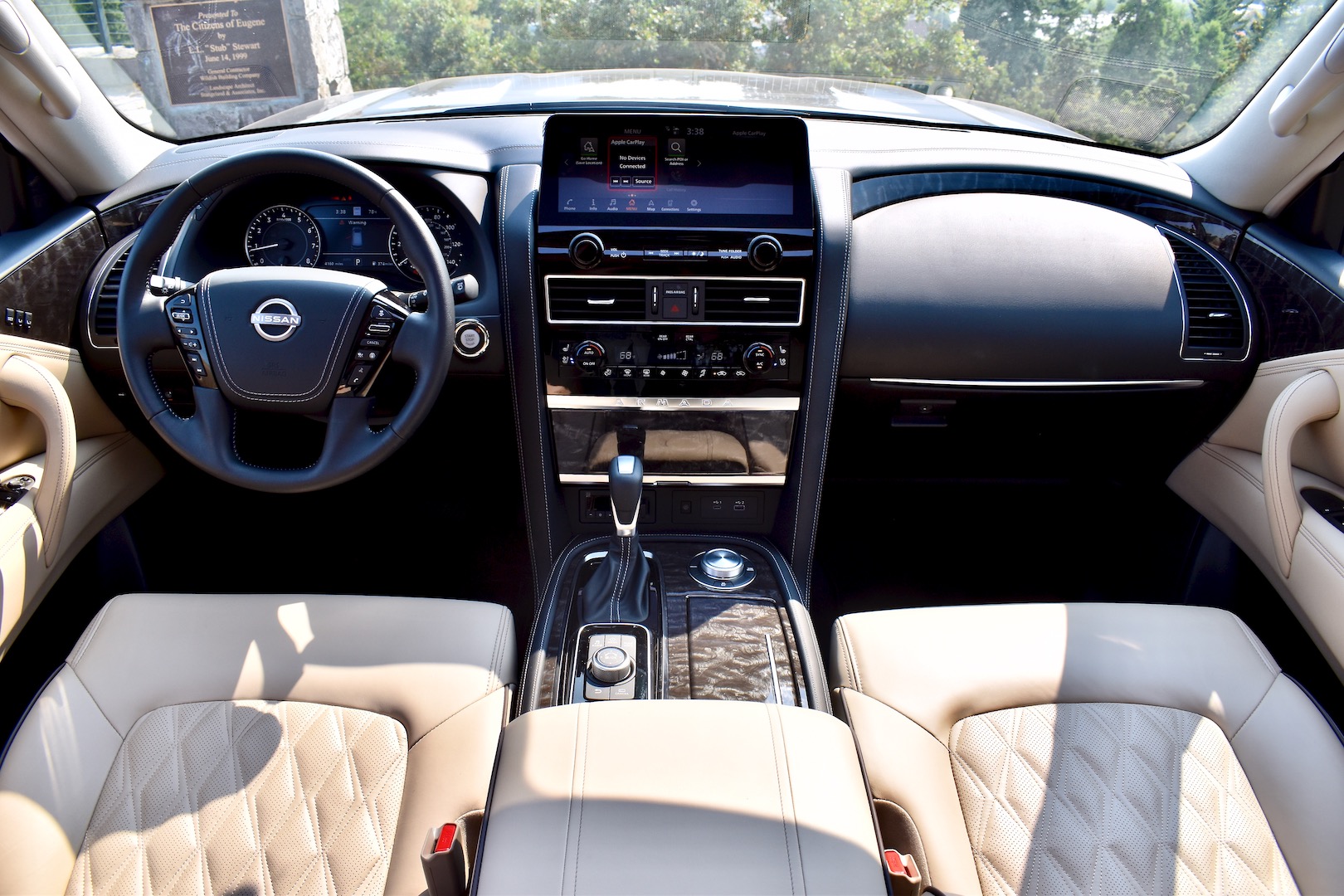
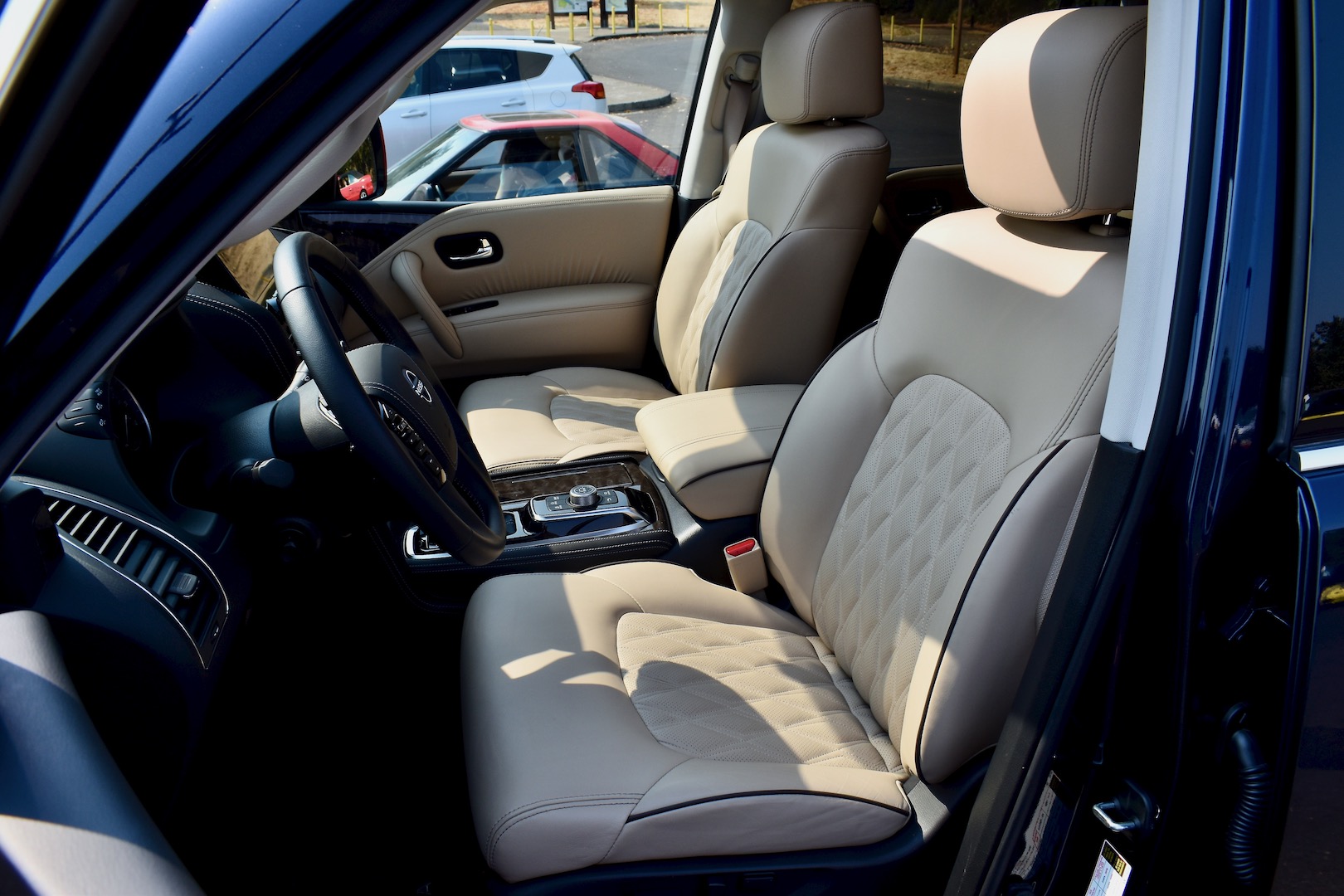
Captain's Quarters
As it should be, comfort is a strong suit of the Armada Platinum, with dual-zone climate control, a smooth ride, and soft quilted leather upholstery. Upfront, this leather is stretched across Nissan's terrific-as-ever Zero Gravity seats, which are power-adjustable 10 and eight ways for the driver and passenger respectively.
The rest of the cabin, lit through a power moonroof and tinted privacy glass for the second and third rows, is spacious like any full-size SUV. Ultimate cubic cargo space, however, is on the low end for full-sizers, falling short of the aforementioned Ford and even further behind the bigger Yukon. It'll probably be dwarfed by that of the 2022 Jeep Wagoneer Series II, which is promised to have the "best-in-class […] total volume" among full-size premium SUVs. The Armada's power liftgate, while useful, isn't a standout feature either, as all of its competitors now include one too.
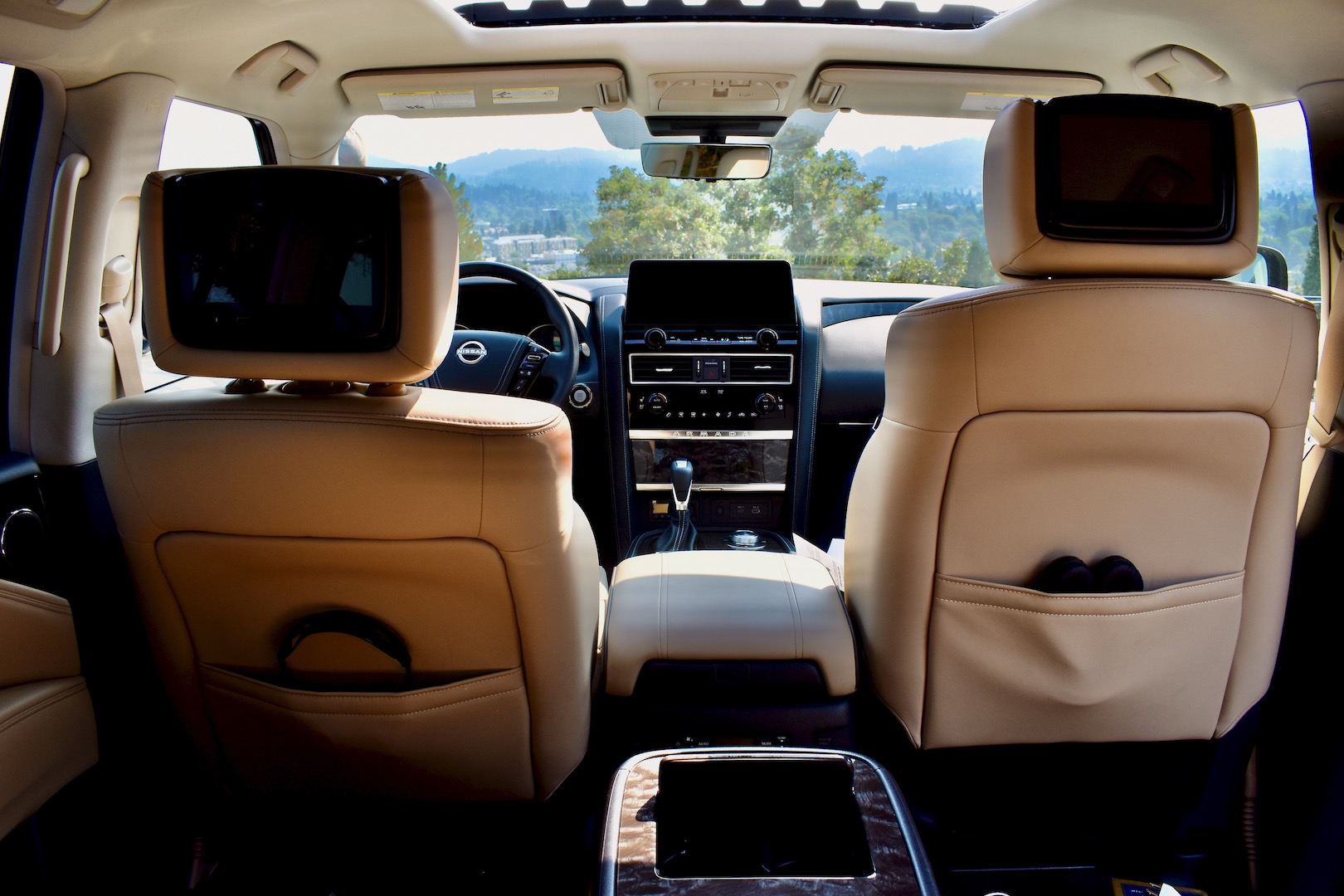
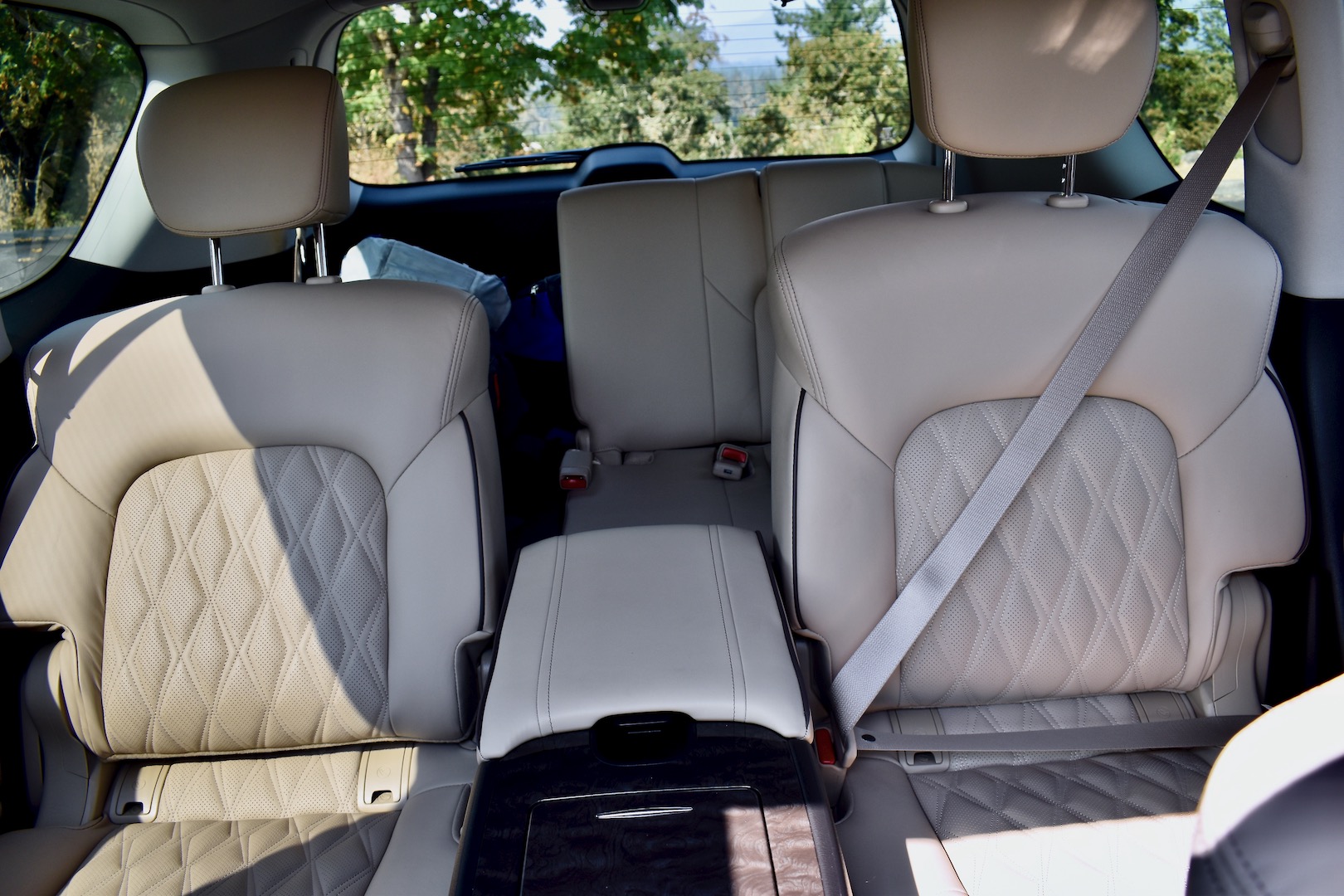
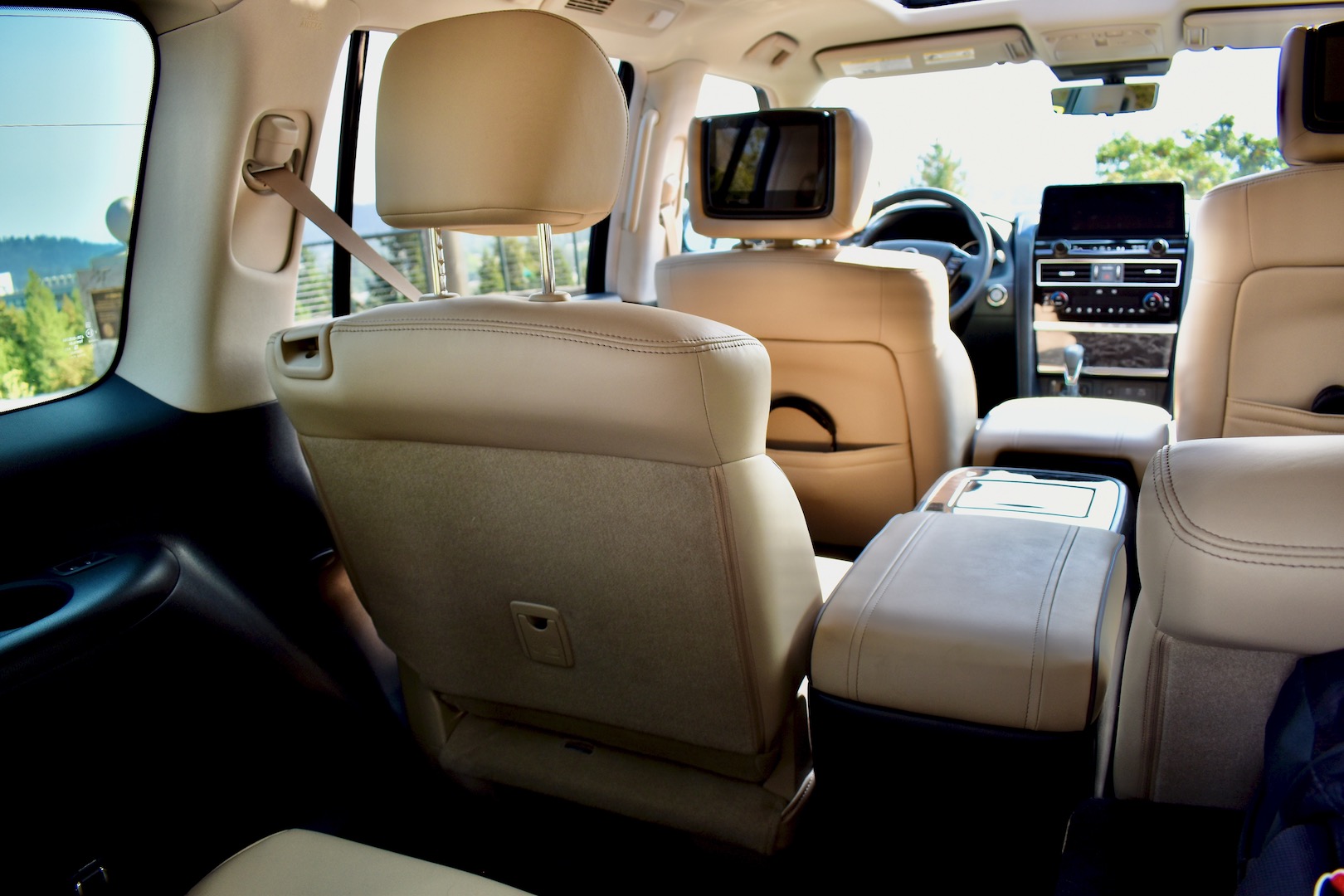
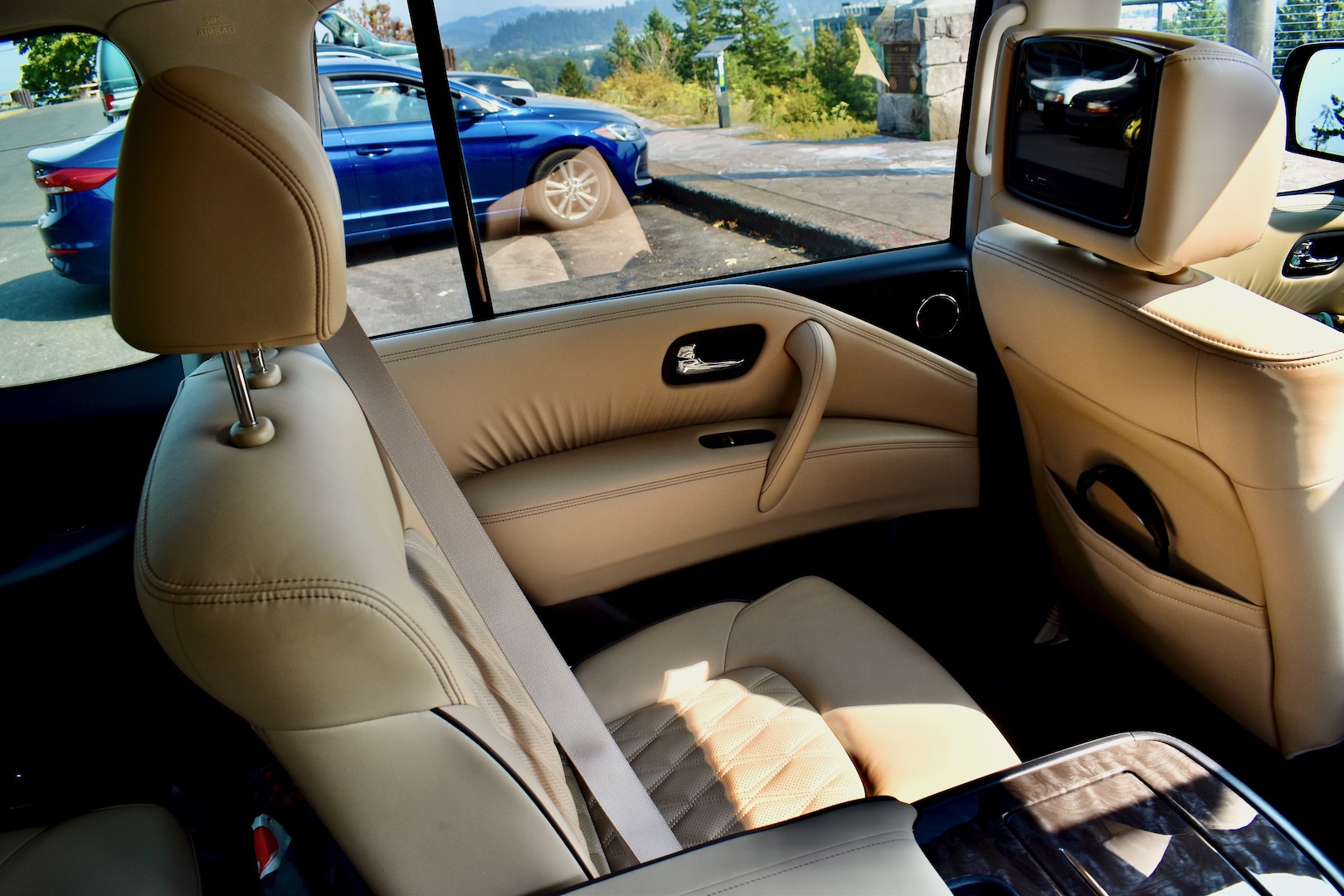
You Can Hear the Ocean
Despite an "acoustic windshield and side windows," the Armada's noise isn't the quietest place at highway speed. It does make up ground with solid visibility, though, which is amplified by awareness-boosting technologies controlled through a seven-inch dashboard display and buttons on the heated, leather steering wheel with power-adjusted tilting, telescoping, and setting memory.
Standard Nissan Safety Shield 360 means automated emergency braking front and rear, rear cross-traffic alerts, and automatic high beams for the LED headlights, plus full-range active cruise control, blind-spot and lane-change intervention, and driver alertness monitoring. The rain-sensing wipers would've been useful, had it not been a record-breaking hot and dry summer. Sign recognition, standard on the Platinum, was useful for remembering the limit on sparsely marked rural roads, and its 360-degree camera was invaluable for parallel parking in Portland. It must be said, though, that its parking assists didn't work perfectly; the system threw an error message and deactivated during one parking session, and took two days to come back online.
This, sadly, was only one of the problems I had with the Armada's gizmos.
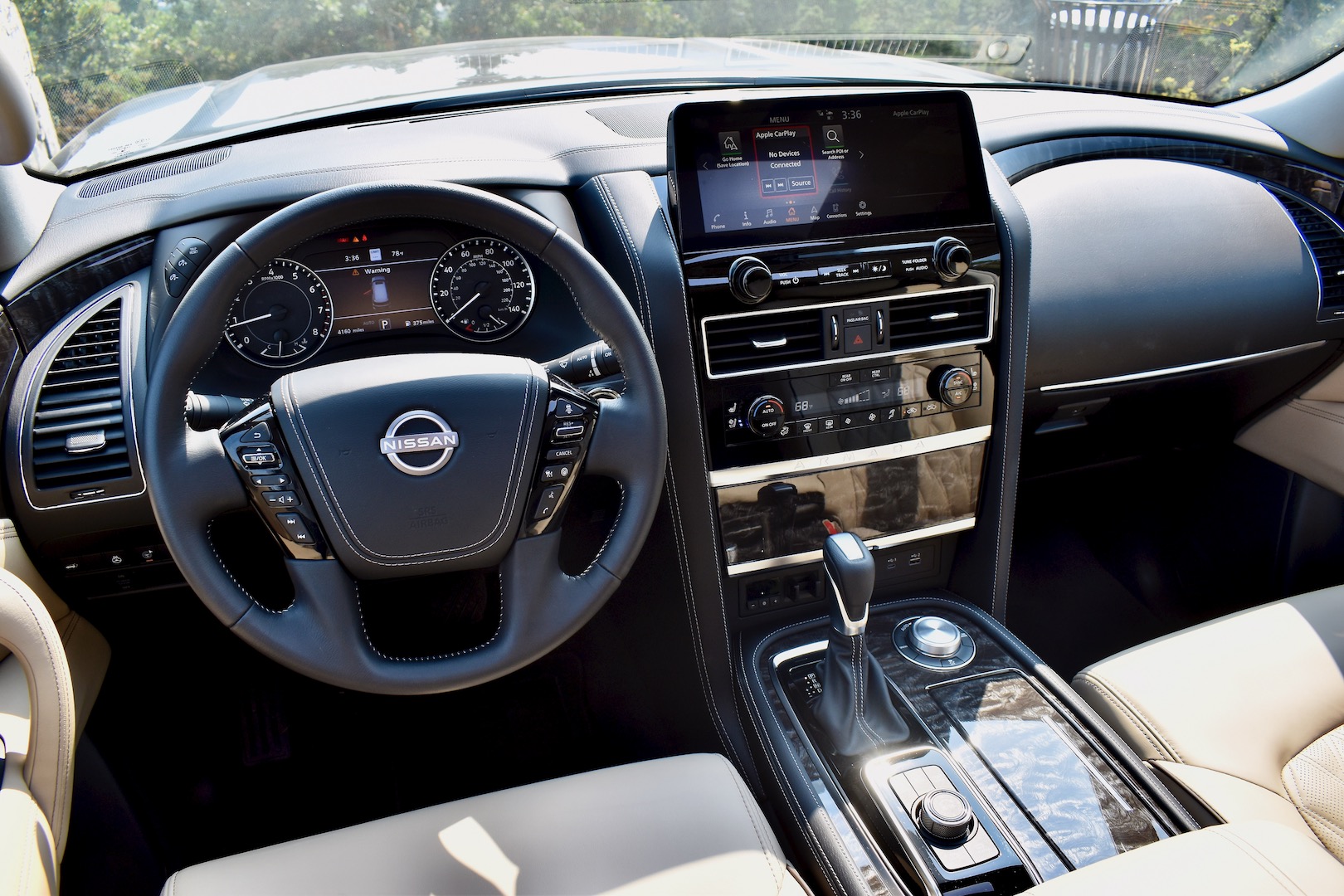
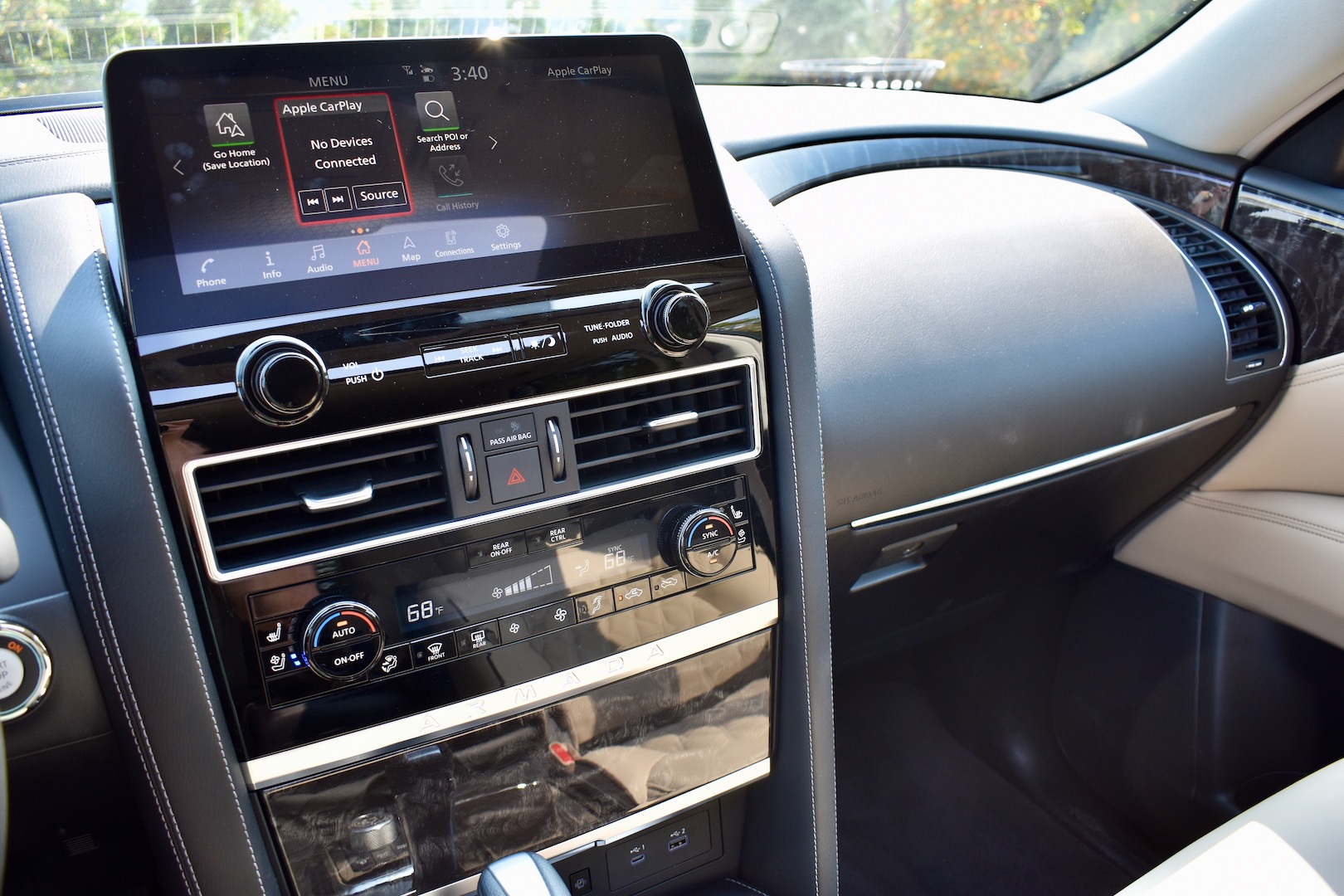
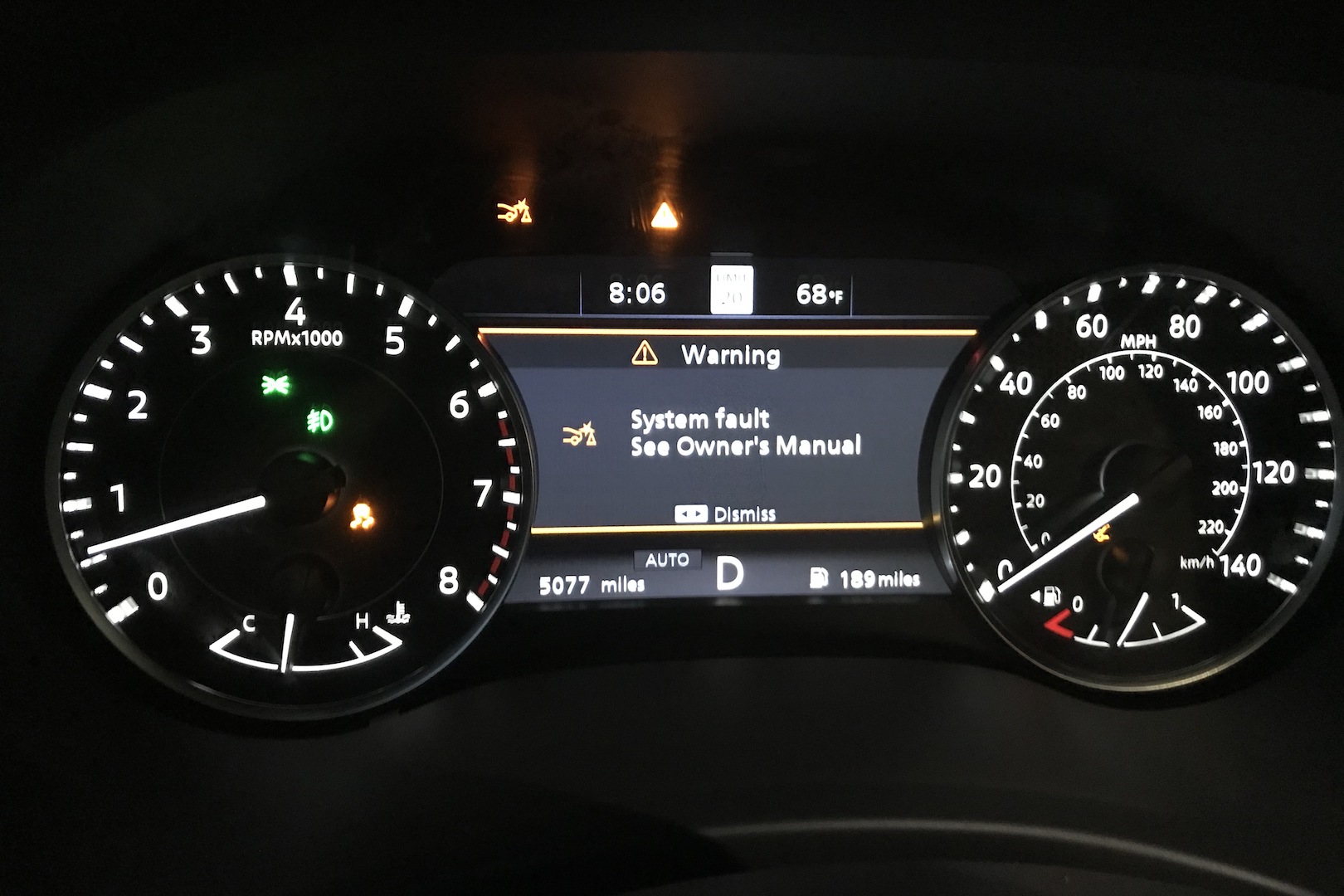
Soon May the I.T. Man Come to Bring Us Updates, Reboots, and… Um…
Having the biggest standard infotainment screen in the segment, at 12.3 inches, may sound great in brochures, but it's pointless posturing that we know to be distracting and dangerous. This is only exacerbated when, despite standard Apple CarPlay and Android Auto, the system doesn't always work correctly, sometimes running slowly, and at least once even crashing entirely during normal use.
It also wasn't always good at pairing with the right smartphone, choosing unpredictably the device that was plugged in and the one connected through Bluetooth. Once, it even refused to pair with anything, forcing a full reboot that required turning the vehicle off and walking its smart key out of range. Road trip or not, this was not the detour I was looking for.
Furthermore, I expected more of the Platinum's 13-speaker Bose sound system, which sounded flat when playing layered instrumentals like those of Diablo Swing Orchestra, and I still don't see the point of onboard WiFi. Who needs another recurring bill when we all already have smartphones with their own data plans? Granted you get more range when the entire car acts as an antenna, but it's not an option I'd ever spec. Speaking of which, the Armada could use more than one USB-A and -C port for each of its first two rows. Not because I don't own a phone compatible with the wireless charging pad, and had to rotate charges with my travel companion, but because parents won't want to listen to their kids fight over who gets to charge their phone.
The eight-inch seat-back screens with wireless headphone and HDMI inputs might dope them up, but I'm not sure I can recommend the Armada as a family vehicle at all, not in light of its two-star frontal driver crash protection, and only three-star frontal passenger and rollover protection.
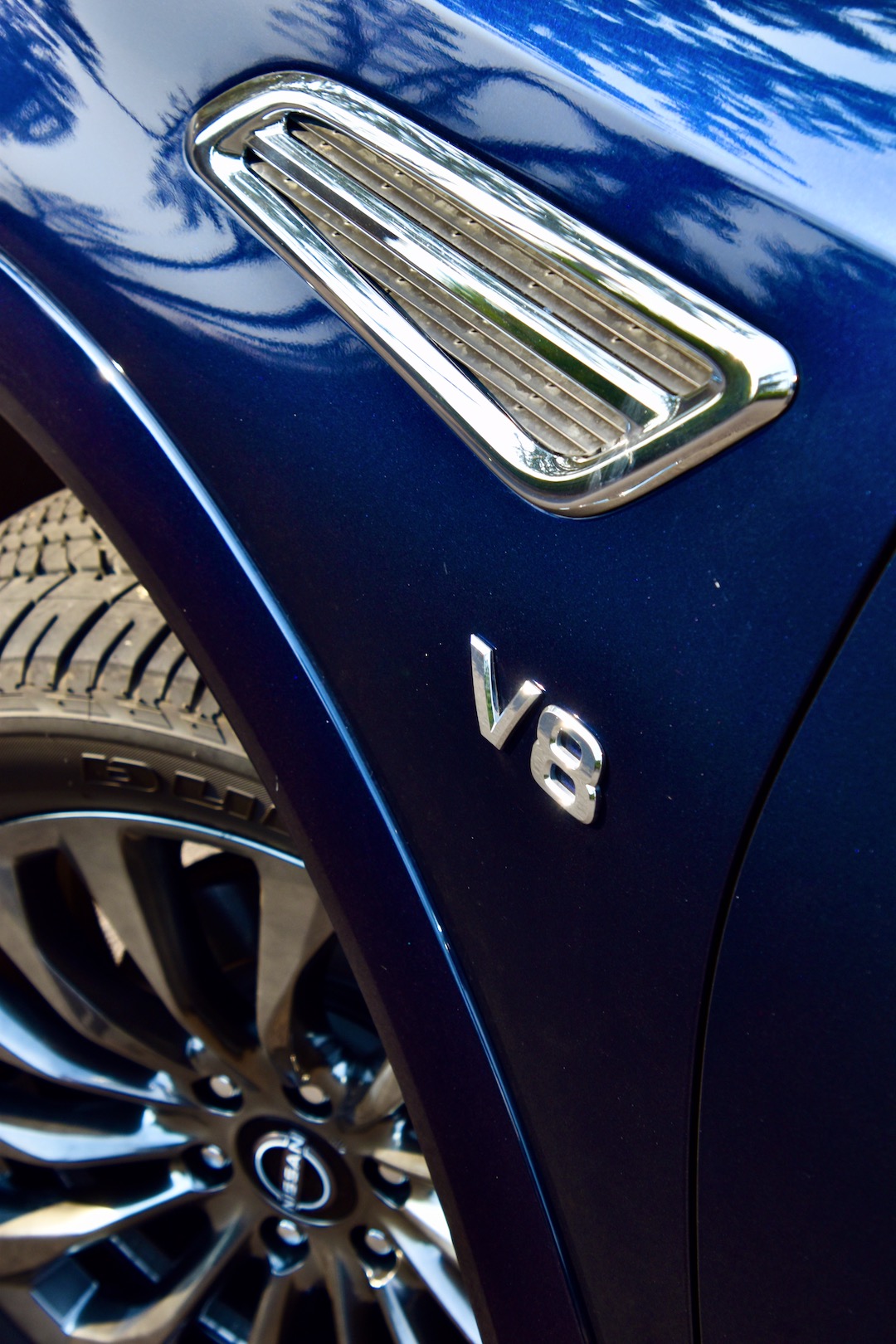
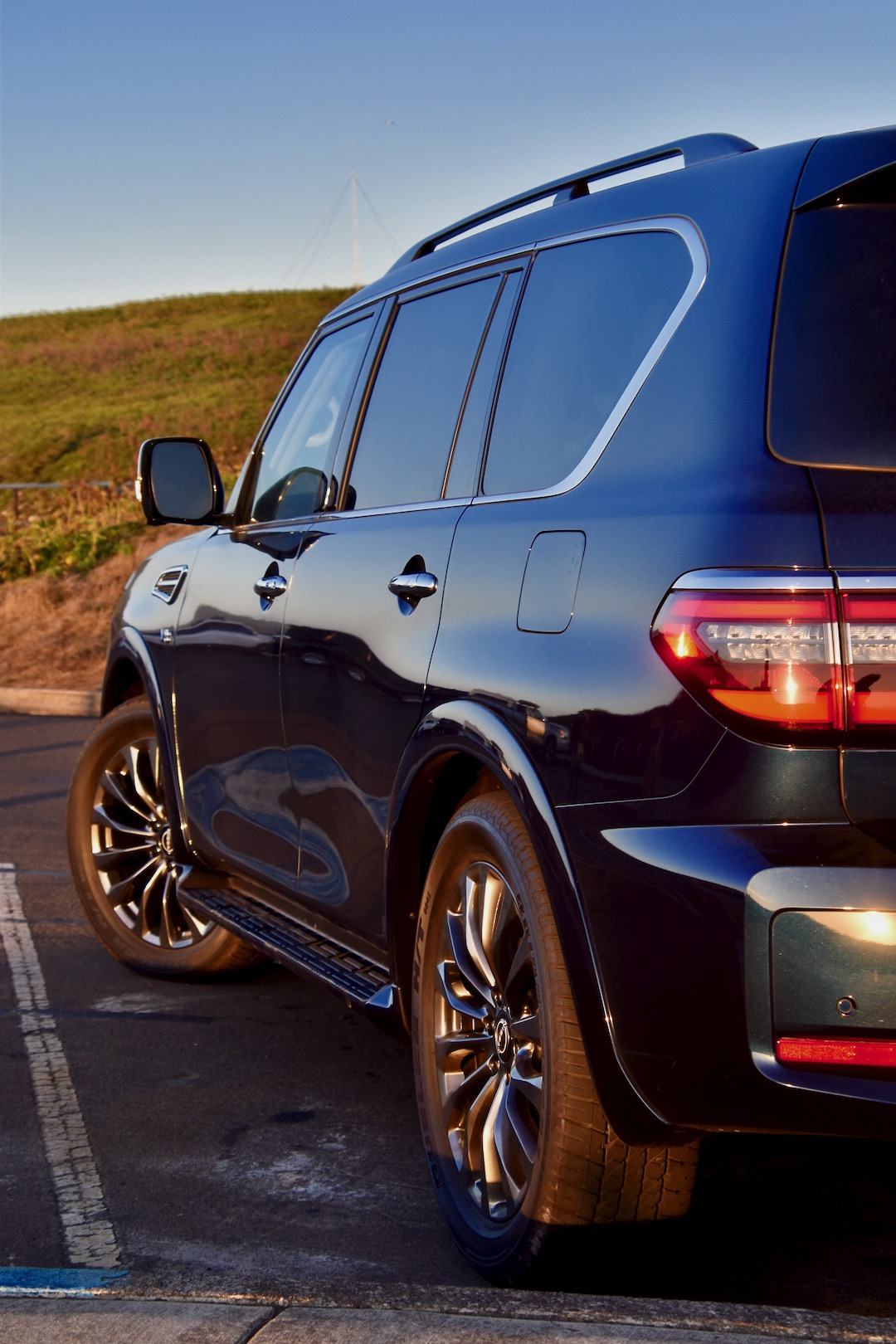
Displacement and Tonnage
There's still an argument to be made for the Armada as a utility vehicle though, as while not the biggest it's still big, and with an 8,500-pound standard tow rating, it out-tows all Yukons and the base Expedition. The Ford can beat the Armada's overall capacity with its optional tow package, but base Expeditions are only five-seaters, and a three-row model with the tow package comes in $6,150 above the $50,395 base Armada S.
Admittedly, though, said Ford includes a trailer brake controller and sway control, and while the former is available on the still-cheaper Armada SV at $54,395, the latter is locked to the $58,205 Armada SL. Ford's SUV also produces more torque, and has a 10-speed automatic rather than the Nissan's seven-speed, so it returns better gas mileage. Its turbo V6 doesn't produce the same rumble as the Armada's 5.6-liter V8, though, which remains a selling point to some as downsized engines take over trucks.
Driving dynamics count for something too, as the Armada's four-wheel independent suspension with twin-tube shocks hefted the three-ton SUV down Oregon's winding, narrow forest highways without a hint of unease. Foregoing solid axles does slightly compromise off-road performance, though, as while more capable than every Yukon below the AT4, with superior ground clearance and approach, break-over, and departure angles, it's either matched or outperformed on all fronts by the Expedition. The Wagoneer will be handy there too, if at a significantly higher price.
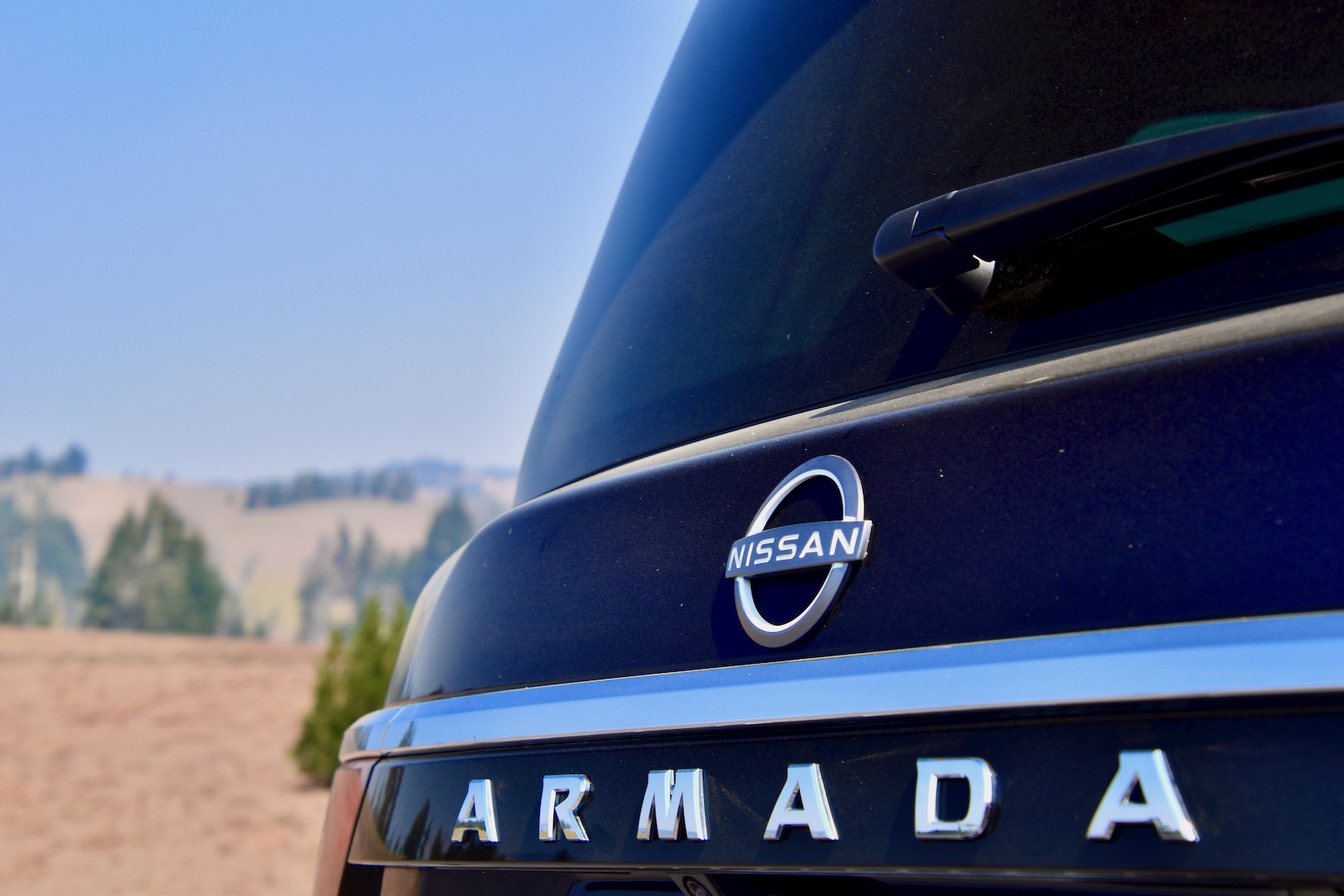
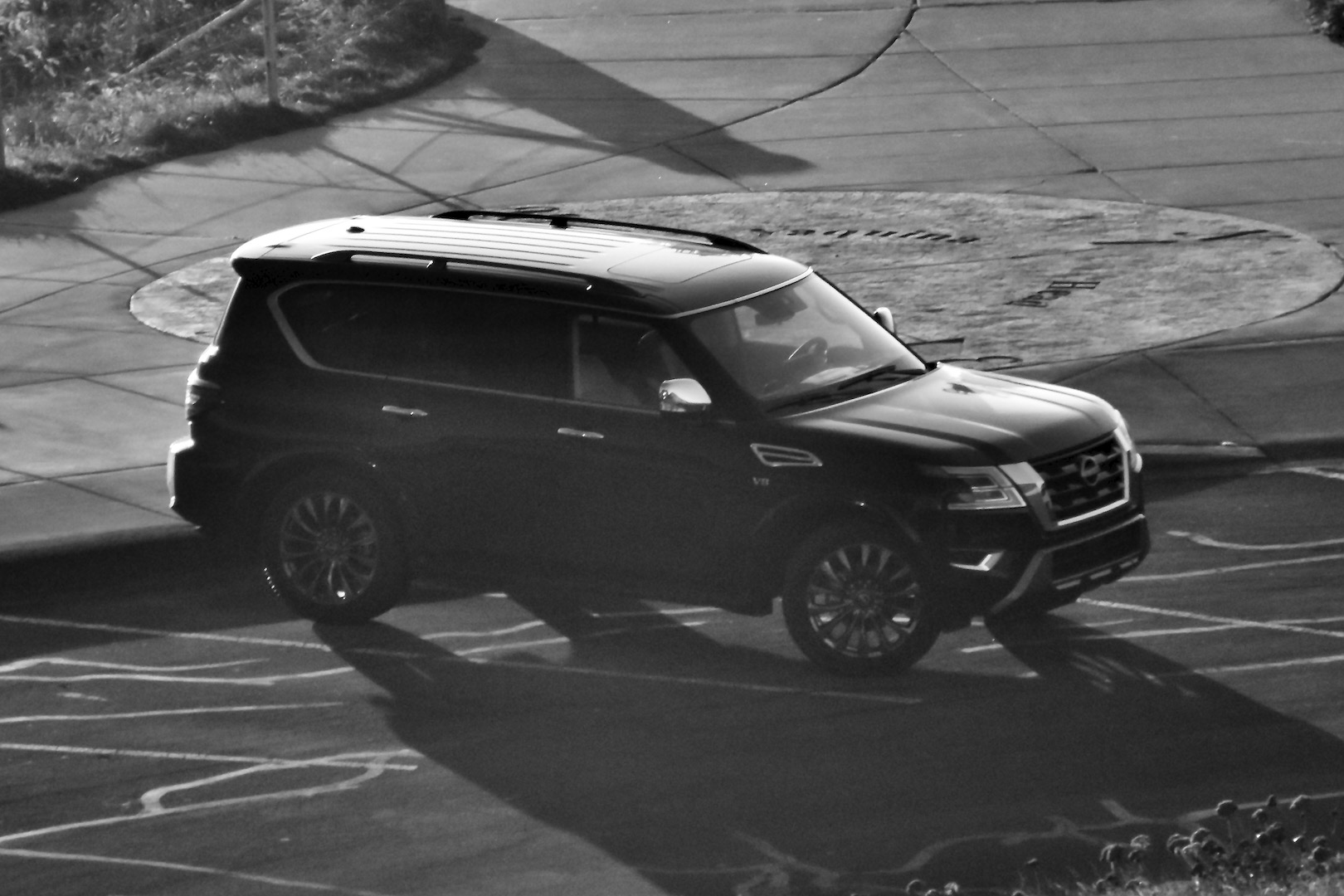

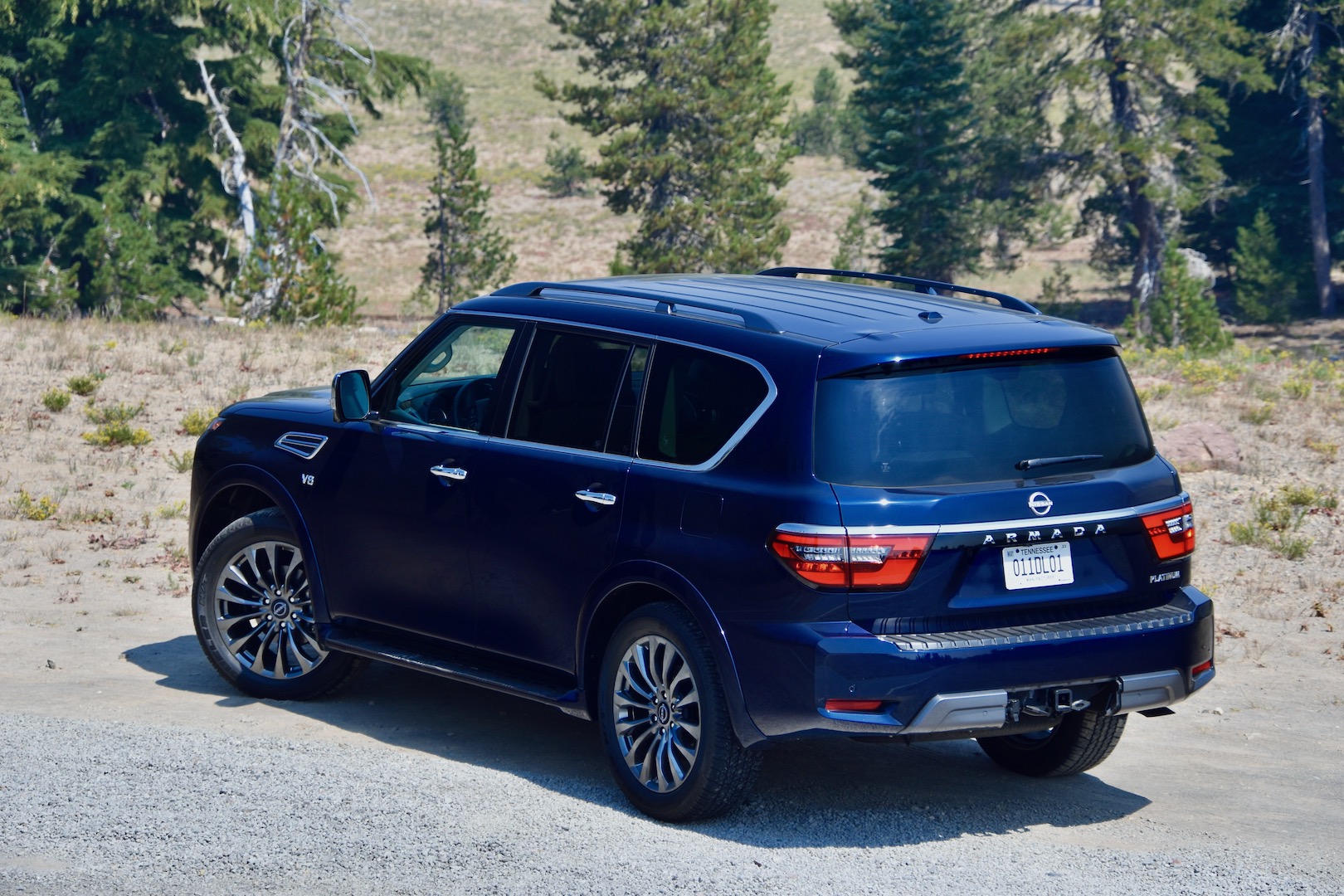
The Verdict
Against options from Detroit, the refreshed 2021 Nissan Armada certainly looks the part, with standout design, laudable towing across the whole model range, and a generous standard tech package. Only, because the 2021 model's biggest improvements concern standard equipment, the Armada makes the best case for itself on the lower trims, as a thrifty three-row tow vehicle.
Nice though the Armada Platinum may be, it's hard to recommend splashing out on an SUV dogged by software problems, especially when that extra money isn't your ticket to any of the Armada's best features—or your salvation from its worst.
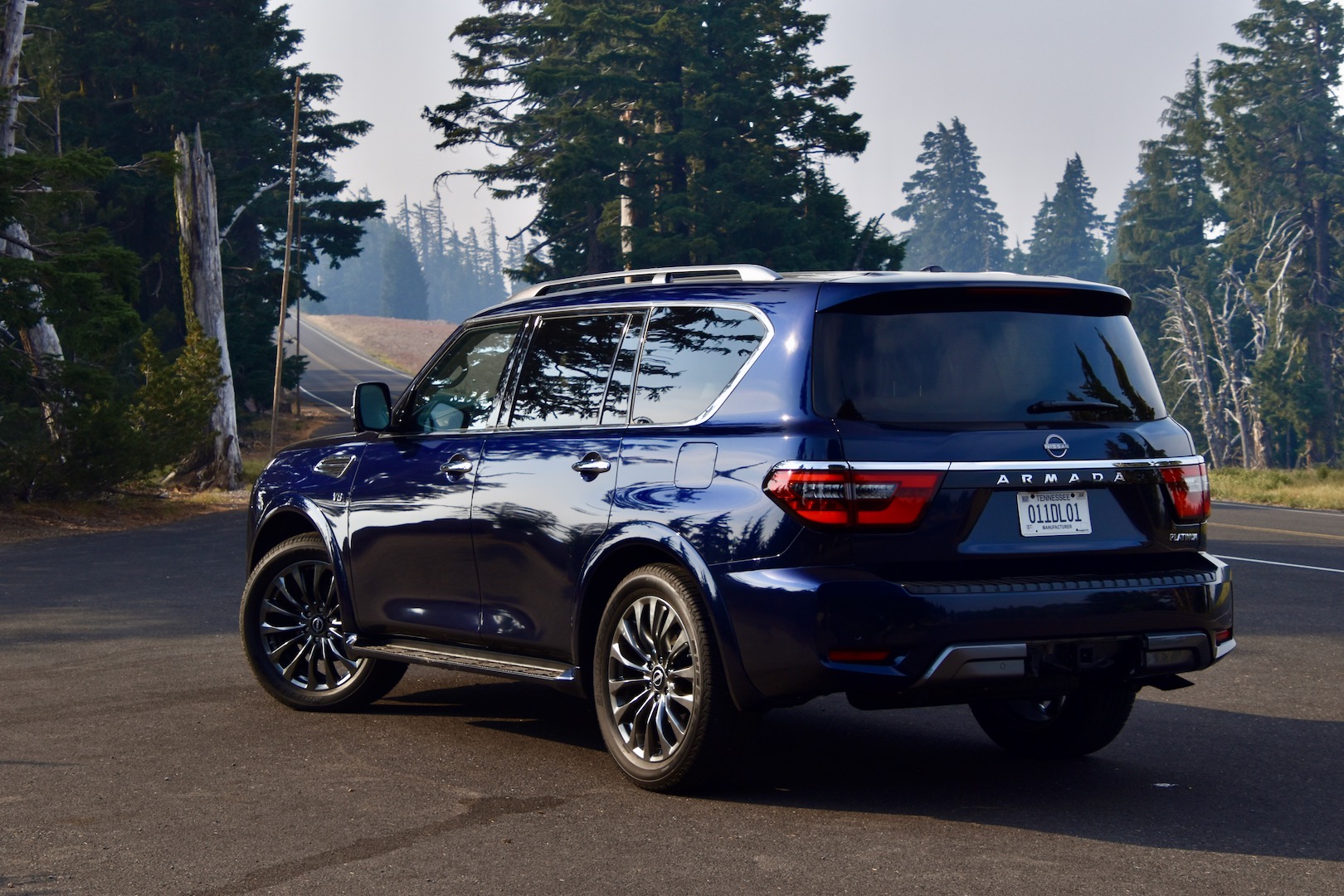
Got a tip or question for the author? You can reach them here: james@thedrive.com

